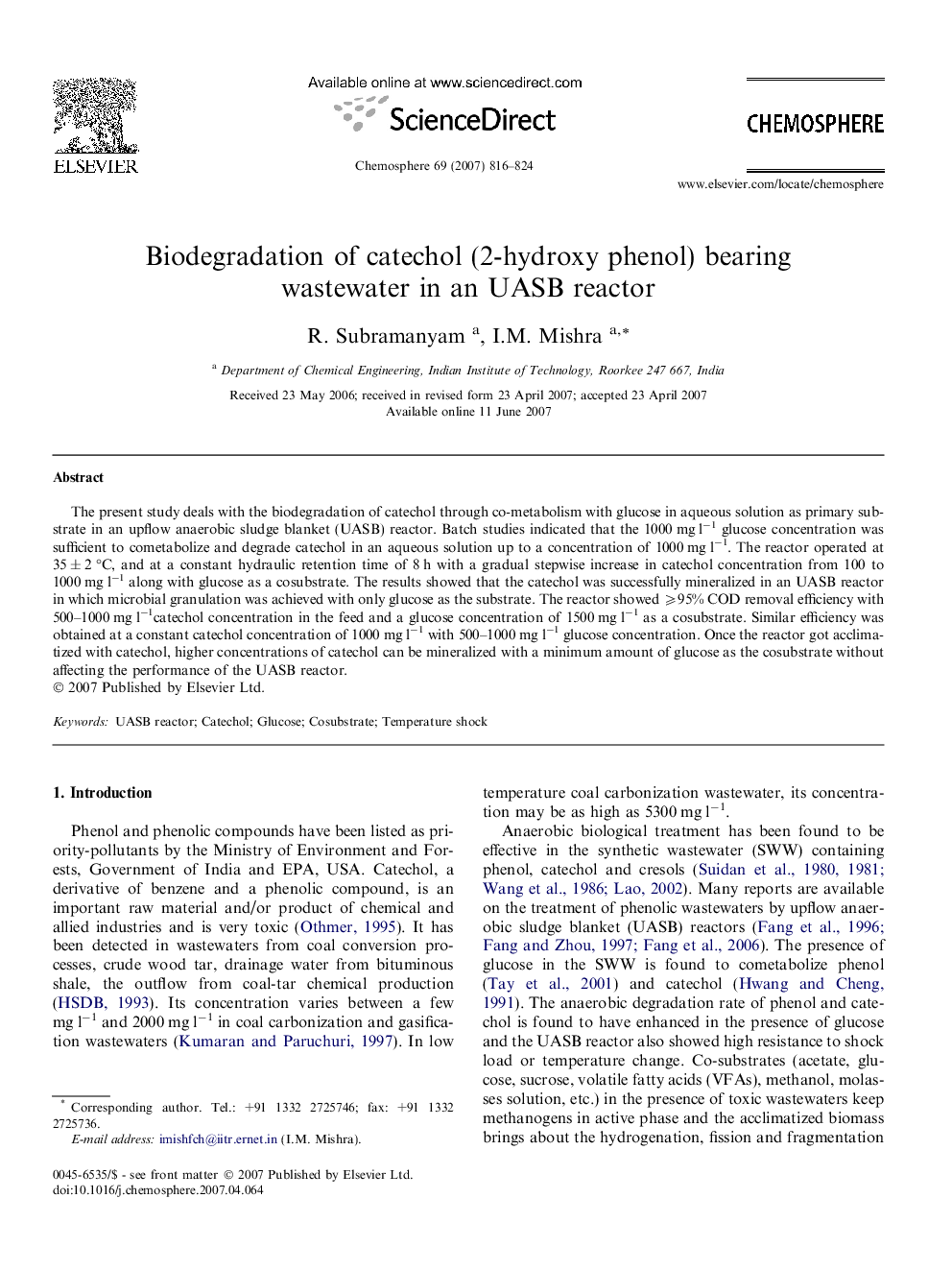| Article ID | Journal | Published Year | Pages | File Type |
|---|---|---|---|---|
| 4414744 | Chemosphere | 2007 | 9 Pages |
The present study deals with the biodegradation of catechol through co-metabolism with glucose in aqueous solution as primary substrate in an upflow anaerobic sludge blanket (UASB) reactor. Batch studies indicated that the 1000 mg l−1 glucose concentration was sufficient to cometabolize and degrade catechol in an aqueous solution up to a concentration of 1000 mg l−1. The reactor operated at 35 ± 2 °C, and at a constant hydraulic retention time of 8 h with a gradual stepwise increase in catechol concentration from 100 to 1000 mg l−1 along with glucose as a cosubstrate. The results showed that the catechol was successfully mineralized in an UASB reactor in which microbial granulation was achieved with only glucose as the substrate. The reactor showed ⩾95% COD removal efficiency with 500–1000 mg l−1catechol concentration in the feed and a glucose concentration of 1500 mg l−1 as a cosubstrate. Similar efficiency was obtained at a constant catechol concentration of 1000 mg l−1 with 500–1000 mg l−1 glucose concentration. Once the reactor got acclimatized with catechol, higher concentrations of catechol can be mineralized with a minimum amount of glucose as the cosubstrate without affecting the performance of the UASB reactor.
